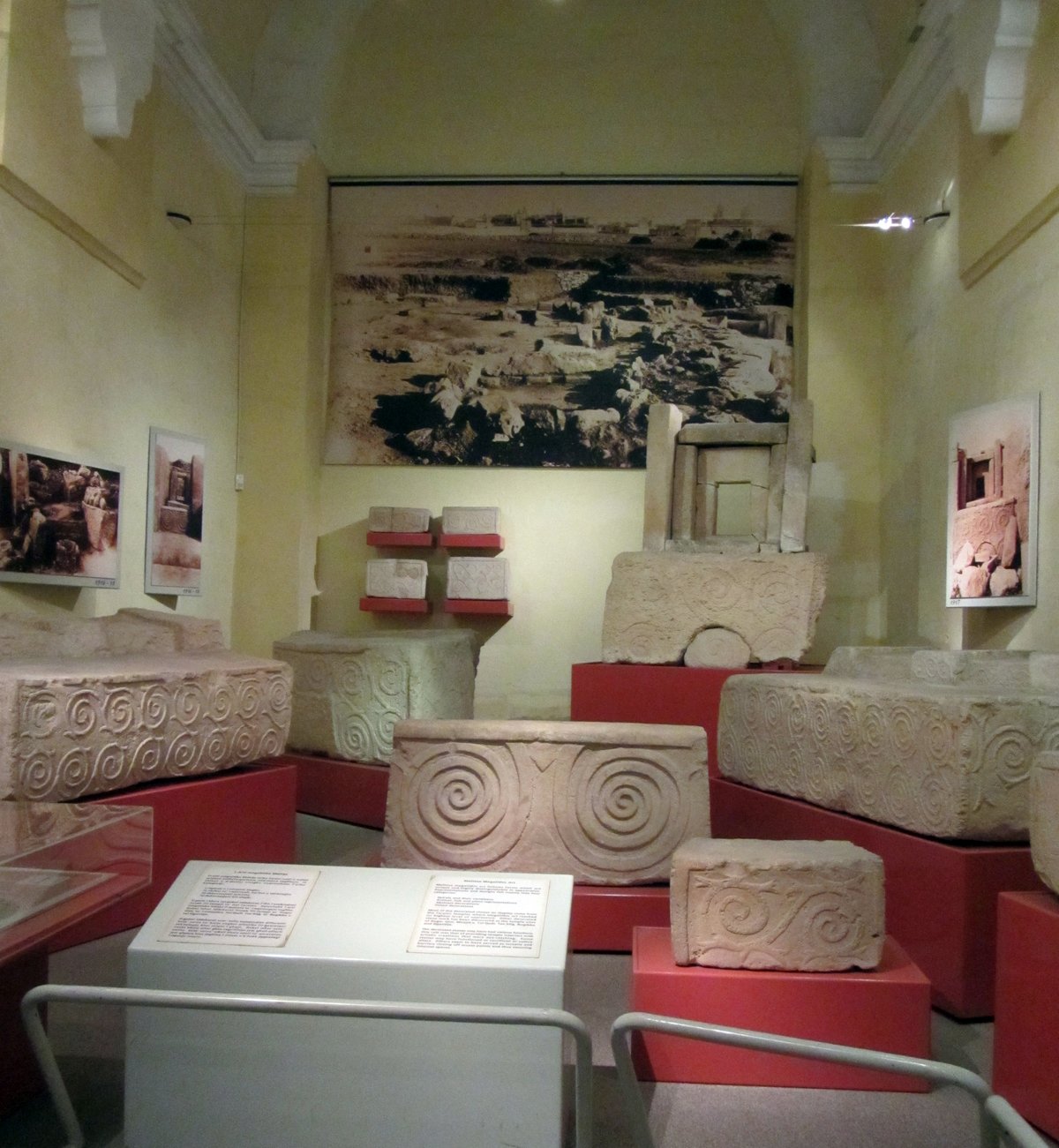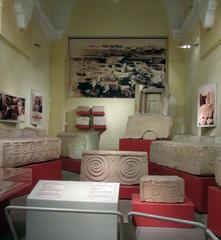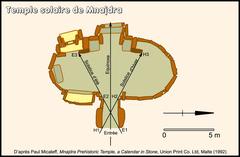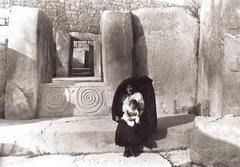
Megalithic Temples of Malta Tarxien: Visiting Hours, Tickets, and Historical Sites Guide
Date: 14/06/2025
Introduction: History and Significance of the Tarxien Temples
The Tarxien Temples, located in the heart of Malta, are among the most impressive remnants of prehistoric civilization in the Mediterranean. Dating from approximately 3600 BCE to 2500 BCE, these four interconnected megalithic structures are part of the UNESCO World Heritage-listed “Megalithic Temples of Malta” and are considered some of the oldest free-standing stone buildings in the world (UNESCO World Heritage Listing for Tarxien Temples). The site stands out for its advanced architectural features, intricate stone carvings, and symbolic motifs, offering insight into the spiritual and social lives of Malta’s ancient inhabitants.
Visitors to the Tarxien Temples can explore complex temple layouts, ceremonial altars, and ritual spaces that reveal the island’s rich Neolithic heritage. Notable features, such as spiral reliefs, animal motifs, and the famous “Fat Lady” fertility statue, highlight the artistic mastery and cultural depth of the temple builders (Ancient Engineering Marvels; British Museum Collection on Tarxien Artifacts). The site is accessible via public transport and offers visitor amenities and guided tours, ensuring an enriching experience for all.
Contents
- Introduction
- Visiting Hours and Ticket Information
- Getting There and Nearby Attractions
- Historical Context and Archaeological Discoveries
- Architectural Features and Artistic Significance
- Accessibility and Visitor Facilities
- Practical Tips for Visitors
- Conservation Challenges and Efforts
- Sustainable Tourism and Visitor Guidelines
- Ongoing Research and Community Engagement
- Frequently Asked Questions (FAQs)
- Conclusion and Call to Action
Visiting Hours and Ticket Information
-
Opening Hours:
- Summer (April–October): 9:00 AM – 5:00 PM
- Winter (November–March): 9:00 AM – 4:30 PM
- Closed on Christmas Day and New Year’s Day
-
Ticket Prices:
- Adults: €10
- Students and Seniors (65+): €7–€8
- Children (under 12): Free
- Family Pass (2 adults + 2 children): €25
Tickets are available at the entrance and online via the Heritage Malta Tarxien Temples Page. Booking in advance is advised during peak periods. Audio guides and expert-led tours are offered in multiple languages.
- Accessibility: The site includes pathways suitable for wheelchair users, although some uneven terrain remains due to the ancient structure. Assistance is available on request.
Getting There and Nearby Attractions
- By Bus: Routes 73 and 74 connect Valletta and Tarxien directly.
- By Car: Parking is available near the site.
The Tarxien Temples are close to other significant Maltese sites, including the Ħaġar Qim and Mnajdra Temples, as well as the National Museum of Archaeology in Valletta, which houses many artifacts from Tarxien.
Historical Context and Archaeological Discoveries
Origins and Chronology
The Tarxien Temples were constructed during the Tarxien phase of Maltese prehistory (c. 3150–2500 BCE), making them among the oldest monumental buildings in the world (UNESCO). The four temples reveal a continuous tradition of temple building and ceremonial practices over centuries.
Excavations and Major Discoveries
Discovered in 1913 and excavated under Sir Themistocles Zammit, the site yielded remarkable finds, including large fertility statues, decorated stone blocks, pottery, tools, and altar remains. These artifacts illuminate the religious and communal life of the temple builders (British Museum Collection on Tarxien Artifacts).
Architectural Features and Artistic Significance
Layout and Design
The Tarxien complex is composed of four interconnected temples, three with five-apse plans and one (the Central Temple) with a unique six-apse design (Ancient Engineering Marvels; Travel2Malta). Central corridors connect the apses in a cloverleaf pattern, likely facilitating processions and communal gatherings (Ancient Origins).
Construction Techniques
Built from locally sourced limestone, the temples showcase sophisticated engineering, including precisely fitted megaliths and trilithon doorways—two upright stones supporting a lintel. These methods underscore the builders’ ingenuity despite the absence of metal tools (Travel2Malta).
Artistic Expression
The temples are adorned with detailed carvings—spirals, animal reliefs (bulls, goats, rams), and geometric patterns—reflecting spiritual beliefs and fertility motifs (Mad Facts Journey). The “Fat Lady” statue, representing a fertility goddess, emphasizes the central role of feminine principles in Neolithic religion.
Symbolism and Cultural Significance
Some temple orientations correspond with astronomical events, such as solstices, indicating the integration of solar cycles into ritual practices (Travel2Malta). The scale and artistry of the site reflect a complex society capable of large-scale construction and specialized craftsmanship.
Accessibility and Visitor Facilities
- Accessibility: Ramps and paved pathways accommodate visitors with mobility needs. Some uneven surfaces exist, but improvements are ongoing.
- Facilities: The visitor center offers educational exhibits, restrooms, and a gift shop. Audio guides and guided tours are available daily.
Practical Tips for Visitors
- Photography: Allowed without flash; please do not touch the ancient stones.
- Best Time to Visit: Spring and autumn for mild weather and fewer crowds; early mornings for optimal lighting.
- Special Events: Heritage Malta sometimes hosts workshops and cultural events—check the official website for updates.
- Virtual Tours: Online 3D models and virtual walkthroughs are available for remote visitors.
Conservation Challenges and Efforts
Environmental and Structural Deterioration
Constructed from soft Globigerina limestone, the temples face ongoing threats from weathering, erosion, and biological growth (UM Malta PDF). Human activity and increasing visitor numbers also contribute to deterioration (UNESCO SOC).
Urban Encroachment
Tarxien’s location within a populated area exposes it to risks from nearby construction and urban development, which can affect the site’s integrity through vibrations, pollution, and changes in water drainage.
Conservation Strategies
Heritage Malta manages ongoing conservation through protective shelters, regular monitoring, and visitor management (UM Malta PDF). International collaborations and scientific studies guide preservation efforts.
Sustainable Tourism and Visitor Guidelines
- Stay on Designated Walkways: Elevated paths prevent damage to fragile stones (Violeta Matei).
- Follow On-Site Rules: Some areas are restricted for conservation reasons.
- Respect the Site: Educational signage encourages awareness and responsible tourism.
Visitor numbers may be limited during peak times to preserve the site’s integrity (Searching for Bliss).
Ongoing Research and Community Engagement
Heritage Malta collaborates with international experts for environmental monitoring, material analysis, and digital documentation (Academia.edu). Community programs and educational workshops encourage public involvement in heritage preservation.
Frequently Asked Questions (FAQs)
Q: What are the Tarxien Temples’ visiting hours?
A: Daily from 9:00 AM to 5:00 PM (last entry 4:30 PM); always check the Heritage Malta website for seasonal updates.
Q: How much do tickets cost?
A: Adults €10, students and seniors €7–€8, children under 12 free. Family and group discounts available.
Q: Are guided tours offered?
A: Yes, guided and audio tours are available and recommended.
Q: Is the site accessible for wheelchair users?
A: The main areas are accessible, though some uneven surfaces remain.
Q: Can I take photographs?
A: Yes, without flash. Tripods may be restricted.
Conclusion and Call to Action
The Tarxien Temples are a remarkable testament to Malta’s prehistoric achievements, combining architectural brilliance, artistic innovation, and spiritual depth. A visit offers a window into a civilization that flourished thousands of years ago, enriched by expert-led tours and modern visitor amenities.
To enhance your experience, download the Audiala app for interactive guides, stay updated through official sources, and explore related Maltese historical sites. Respect the site’s fragile environment and support ongoing conservation by following visitor guidelines.
For more insights and resources, explore our related articles, follow Heritage Malta on social media, and become part of the community dedicated to preserving Malta’s ancient wonders.
Official and Recommended Links
- UNESCO World Heritage Listing for Tarxien Temples
- Heritage Malta Tarxien Temples Page
- British Museum Collection on Tarxien Artifacts
- Ancient Engineering Marvels: Tarxien Temples
- Travel2Malta guide: Megalithic Temples in Malta
- UM Malta PDF - Conservation of Malta’s Prehistoric Temples
- Academia.edu - Conservation of Malta’s Megalithic Temple Sites
- Violeta Matei - Tarxien Temples Malta
- Searching for Bliss - Guide to Megalithic Temples Malta


